How to Find the Best Plants for the Small Farm
Number and Classes of Useful Plants
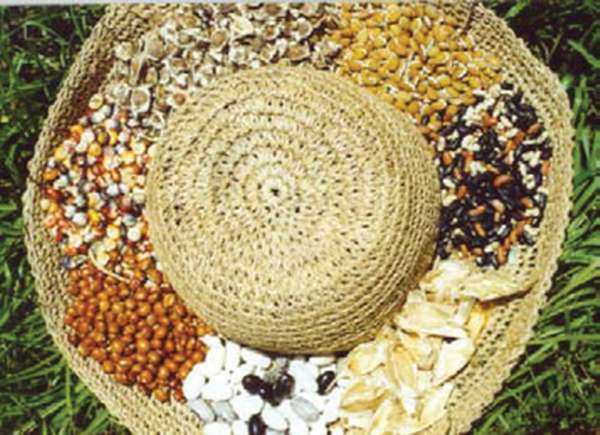 In one attempt to list all of the food plants of the world, Tanaka recorded 10,000 species in a thick volume (Tanaka,T. 1976, Tanaka’s Cyclopedia of Edible Plants of the World). Others claim that the world may contain 20,000 or even 40,000 edible plants, though these claims are not substantiated. Perhaps with the correct processing, every plant is potentially edible.
In one attempt to list all of the food plants of the world, Tanaka recorded 10,000 species in a thick volume (Tanaka,T. 1976, Tanaka’s Cyclopedia of Edible Plants of the World). Others claim that the world may contain 20,000 or even 40,000 edible plants, though these claims are not substantiated. Perhaps with the correct processing, every plant is potentially edible.
In addition to the edible plants, a very large number of plants are useful to humankind in a wide variety of other ways. Plants may serve as feed for livestock. They may also provide humankind with needed items including shelter, clothes, fibers, pipes, fishing poles, toothpicks, etc. There are also ecologically beneficial plants that protect and improve the soil and that can influence conditions such as light and wind.
Though nearly all plants are useful in some way, they are not equally valuable. For example, wheat, rice and corn may be considered the most valuable plants in the world based on the vast acreage planted to these crops, their vital role in feeding humankind, and their enormous economic value. Using various criteria, one might consider 10, 25, or even 200 species as the world’s most valuable plants. Yet, under some situations, by some people, or for some special reason, other plants produced and used on a very small scale might be precious and indispensable. The question, “Which are the most valuable plants for the small farm?”, then, becomes breathtaking.
The Problem of Adaptation
Adaptation as defined here is the range of environmental conditions under which a plant can survive, grow and produce. If a plant is widely adapted, it can be grown under many conditions. This is especially important when one tries to compare plants for their values. A widely-adapted plant is more valuable than one adapted to a narrow range of conditions, even if the use of the narrowly-adapted plant is of great importance. When comparing values of plants, we frequently consider their adaptation to growing conditions on small farms.
The small farms throughout the world often represent marginal areas not always well suited to agriculture. The best farming areas are frequently in the hands of a few who own or control vast acreages. There is a macrodiversity among small farms, from flat, easy-access terrain to those places where farming is very difficult such as hillsides, swamps, brushlands, extreme altitudes, rocklands and small valleys. In addition, there is a microdiversity that easily occurs within “pockets” of space with their own microclimates. This phenomenon is caused by great variability in factors such as slope, amount of soil and its nature, and the amount of rainfall, humidity, or light received. Plants respond differently to such conditions.
Now, these differences among small farms increase the problem of choosing the right plants. The problem can be seen in Central America where small farms usually produce the crop(s) necessary for their own household first, then staple foods for marketing as an income source. Often called the basic grains, these staple crops include corn, sorghum, pearl millet, rice, and beans. To this group must be added cassava and potatoes, both of great importance in many regions. The crops that are grown, and the varieties of such crops, are extremely critical, for these crops must be produced under prevailing rainfall conditions. Crops or varieties respond differently to abnormal amounts (too little or too much) and patterns (rainy season constant or intermittent; too long or too short). The problems of producing these life-sustaining crops are so great that farmers may not concern themselves with home vegetable gardens that could balance the diet for their children. On these small farms the right crops or the right varieties may differ radically from one place to another, and it is difficult to accurately predict what crop might do well in a particular location.
Criteria of Value as Defined Here
Because of the diversity of plants that are useful on the small farm, when thinking of their values it is useful to first classify plants by their uses. For example, in comparing plants for their values it is not reasonable to compare cereal grains to windbreaks. Therefore, all of the discussion that follows is based on the comparison of useful plants within categories as defined by the uses themselves. A very helpful list of plant uses is found as part of the Table of Contents section on the first page of this document. That list serves as an orientation to this publication.
Nevertheless, the classes of uses themselves are of different values. Judgments have been made of these values, and the categories of useful plants are listed somewhat in the order of importance in the Table of Contents. For example, food crops are listed first, and among the food crops, those great staple foods including the most important of all, cereal grains. The weakness of this classification of uses is seen in the expression, “Humankind does not live on bread alone”. Thus, in some places and under some circumstances the order of values would vary.
Within each use category, suggested criteria for deciding the value of and selecting a crop are:
- The wideness of adaptation of the crop.
- The quality of the crop for the use in question.
- The useful yield for the use in question.
- Problems in production.
- Storage or durability.
Using the Tables of Useful Plants
For the avid student who wishes to learn about tropical plants and their many uses, there is never enough information. Of the hundreds of species covered by this publication, some are well known and information on them may be available in other literature. Others are inadequately known. By compiling lists of useful species and presenting them in tables, much useful information is lost, and the author apologizes. However, probably no publication can ever be adequate, for agriculture by its nature must always include local trial and learning from experience.
Information for the various categories of plants is presented in forms of generalities as text, and more specific information is given in the tables. The information in tables always includes one common name and the scientific or species name, and may include other information such as growth habitat, edible parts and uses, principal nutrients, and adaptation in terms of temperature, day length, flooding, drought, or climate region. Sometimes negative factors are mentioned. In addition, the various species are usually rated for their relative values for multiple purposes including food, animal feed, fiber, construction materials, fuel, soil amendment (soil improvement), erosion control, and climatic modification. These uses are more fully discussed in the corresponding portion of the manuscript dedicated to such crops.
Descriptions of Useful Plants Plants for Food: Staple Crops
Cereal and Non-Leguminous Grains
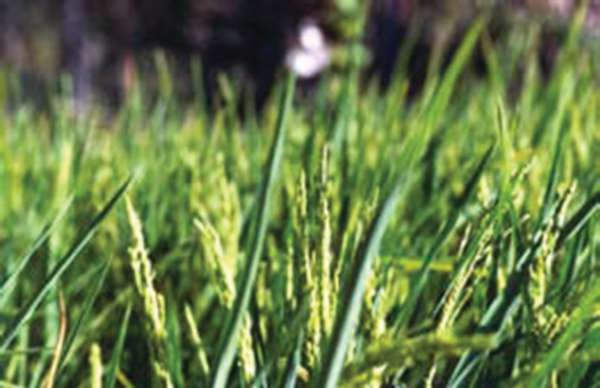
Figure 1. Rice (Oryza sativa) with maturing heads of grain.
Three kinds of edible seed from annual plants can be distinguished: the cereal grains from grasses, the pulses from legumes, and a miscellaneous group which, for convenience here, is called non-leguminous grains. All are annuals that are propagated from seeds.
Cereal grains are the staff of life for most of the people of the world, and wheat is number one. Rice follows, but while extremely important is low in protein. Corn has long been an important life support crop; however, as is the case with other cereal grains, it normally lacks sufficient lysine to fulfill all human dietary protein requirements. However, several high lysine corn varieties have been developed, making this crop the most important member of its class and a potentially useful lifesaver everywhere. The high protein grain triticale also has great promise. Choice of variety suited for the locale is always important for the cereals. Time of planting and harvest may also be critical.
The non-leguminous grains are an assortment of minor crops having special value in isolated regions. They should be considered as potentially valuable but experimental and only rarely could they replace a cereal grain.
On selecting a grain crop, familiarize yourself with the grain crops already grown in the region, including the varieties and their problems. Search first for improved varieties. Try to substitute high lysine (high quality protein) varieties of corn for current varieties. Then, add a little additional fertilizer to the soil and you will be repaid with generous yields. All of the grain crops in the following tables are annuals propagated from seed.
|
Table 1. A Comparison of Grain Crops |
|||||||||
|
Common Name |
Species Name |
Growth Habit |
Edible Parts and Uses |
Principal Nutrients |
|
Adaptation |
|
Negative Factors |
|
|
|
Temp. |
Day-length |
Flood |
Dry |
|||||
|
Amaranth |
A. cruentis
A. hypochondriacus |
rapid, upright, branched |
seed in flour, popped |
protein, starch |
warm to hot |
neutral |
no |
some |
tiny seeds, some heads shatter |
|
Barley |
Hordeum vulgare |
branched grass |
seed in flour, cereal, malt, grits |
protein, starch |
cool to warm |
neutral |
no |
no |
|
|
Buckwheat |
Fagopyrum esculentum |
herabeous bush |
seed in flour, cereal, green manure |
protein, starch |
warm |
neutral |
no |
no |
high altitude crop |
|
Corn, Maize |
Zea mays |
upright grass |
cereal, starches, oil, seed in flour |
protein, oil, starch |
warm to hot |
neutral to short |
no |
no |
|
|
Kañiwa Cañihua |
Chenopodium pallidicaule |
broadleaf herb |
seed in flour |
protein, starch |
warm |
neutral |
no |
some |
small seeds, high altitude |
|
Pearl Millet |
Pennisetum americanum |
upright grass |
seed in flour, cereal |
protein, starch |
warm |
neutral |
no |
yes |
|
|
Quinoa |
Chenopodium quinoa |
broadleaf herb |
seed in flour |
protein, starch |
warm |
neutral |
no |
some |
tiny seeds, high altitude |
|
Rice |
Oryza sativa |
branched grass |
seed as staple food, flour, starch |
starch, low protein |
warm to hot |
neutral |
yes |
no |
relatively low protein |
|
Sorghum |
Sorghum bicolor |
upright grass |
seed as flour, cereal |
protein, starch |
warm to hot |
neutral |
no |
some |
birds eat best varieites |
|
Teff |
Eragrostis tef |
branched grass |
seed in flour, flat bread (injera) |
protein, starch |
cool |
neutral |
no |
no |
small seed, high altitude |
|
Triticale |
X Triticum aestivum |
branched grass |
seed as flour, cereal, bread |
starch, high protein |
cool to warm |
neutral |
no |
no |
experimental, hard to get |
|
Wheat, bread |
Triticum aestivum |
branched grass |
seed as flour, cereal, bread |
protein, starch |
warm |
neutral |
no |
no |
|
|
Wheat, pasta |
Triticum turgidum durum |
branched grass |
seed as flour, cereal, pasta |
protein, starch |
warm |
neutral |
no |
no |
|
|
Table 2. Uses and Ratings (0-5) of Use for Selected Grain Crops. |
|||||||||
|
Common Name |
Other Food Uses |
Food |
Feed |
Fiber |
Construction |
Fuel |
Soil Amend. |
Erosion Control |
Modify Climate |
|
Amaranth |
edible leaves |
4 |
2 |
0 |
0 |
1 |
1 |
1 |
0 |
|
Cañihua |
edible leaves |
4 |
3 |
0 |
0 |
0 |
1 |
1 |
0 |
|
Corn |
fresh seed |
5 |
5 |
0 |
1 |
2 |
1 |
1 |
0 |
|
Kiwicha |
edible leaves |
4 |
3 |
0 |
0 |
0 |
1 |
1 |
0 |
|
Pearl Millet |
|
4 |
4 |
0 |
1 |
1 |
1 |
1 |
0 |
|
Quinoa |
edible leaves |
5 |
0 |
0 |
0 |
1 |
1 |
1 |
0 |
|
Rice |
|
5 |
3 |
0 |
0 |
1 |
1 |
1 |
0 |
|
Sorghum |
|
4 |
5 |
0 |
2 |
2 |
1 |
1 |
0 |
|
Wheat |
|
5 |
4 |
0 |
0 |
1 |
1 |
1 |
0 |
Pulses (Leguminous Grains):
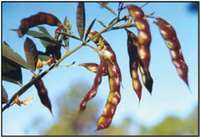
Figure 2. Pods of Pigeon Pea (Cajanus cajun), a good selection for semi-arid areas.
Pulses are the dried seeds of leguminous plants and are important as sources of protein for the diet. The same species are often useful for non-dry seeds and pods. As a group, they are limited in production per acre or hectare, but those that excel in protein content are particularly valuable. None are potentially more valuable than soybean with its high yields and content of protein and oil. But, soybean is limited in two ways: (1) it needs inoculation or to be in the presence of a specific bacterium in the soil and (2) it must mature during dry days.
For pulse crops, the appropriate variety for the locale and date of planting is extremely important, and they often have disease and/or insect problems. People often have very fixed habits with respect to these crops. Convincing them to change a variety may be very difficult. All of these crops are propagated chiefly by seeds.
Selecting an adequate pulse crop for any given region inevitably involves extensive testing of species and varieties and involving the local people in trials of suitable cooking methods that would be acceptable by the populace. The task of replacing a given pulse or introducing a new one is often quite difficult because of cultural preferences.
|
Table 3. A Comparison of Pulses (Dried Legumes Used for Cooking) |
||||||||||
|
Common Name |
Species Name |
Annual/ Perennial |
Growth Habit |
Edible Parts and Uses |
Principal Nutrients |
|
Adaptation |
|
Negative Factors |
|
|
Temp. |
Day-length |
Flood |
Dry |
|||||||
|
Bambara nut |
Vigna subterranea |
annual |
compact, bushy herb |
seeds ground or boiled, pods boiled |
protein |
hot |
mostly neutral |
no |
no |
hard seed |
|
Bean, common |
Phaseolus lunatus |
annual |
bushy herb or vine |
boiled seeds, mashing and refrying |
protein, starch |
warm |
mostly neutral |
no |
some |
limited adaptating to the tropics |
|
Chick pea, garbanzo |
Cicer arietinum |
annual |
bushy herb or vine |
boiled seeds |
protein, starch |
cool to warm |
neutral |
no |
yes |
temperate climate only |
|
Cowpea |
Vigna unguiculata |
annual |
bushy herb or vine |
boiled seeds, immature pods, leaves |
protein, vit. B |
hot |
mostly neutral |
no |
some |
diseases and insects |
|
Faba bean |
Vicia faba var. faba |
annual |
bush |
boiled seed, roasted, ground meal |
protein, starch |
cool to warm |
mostly neutral |
no |
some |
Fabism (a disease) is linked to this |
|
Horse gram |
Macrotyloma uniflorum |
annual |
bush or weak vine |
boiled seed |
protein, starch, oil |
hot |
mostly short day |
no |
some |
|
|
Lablab |
Lablab purpureus |
annual |
climbing vine |
boiled seed, mature seeds and pods |
protein, starch |
warm |
short day |
some |
some |
excessive vine growth during long days |
|
Lima bean |
Phaseolus vulgaris |
annual |
bush or vine |
boiled seed or green pod |
protein, vit. B, starch |
hot |
variable |
no |
some |
foliage contains HCN |
|
Moth bean |
Bigna acontifolia |
annual |
low trailing vine |
boiled seed, ground or fried forage |
protein, starch |
mostly hot |
neutral, short day |
no |
yes |
difficult to harvest |
|
Mung bean |
Vigna radiata |
annual |
small bush or vine |
boiled and sprouted seed, edible pods |
protein, starch |
cool to warm |
neutral, short day |
no |
yes |
rhizobium inoculation needed in some soils |
|
Popping bean Nuña |
Phaseolus vulgaris |
annual |
vine |
popped before eating |
protein, starch |
cool to warm |
mostly short day |
no |
some |
adapted to Andes Mtns. |
|
Pea, garden |
Pisum sativum |
annual |
weak vine |
boiled seed, ground meal |
protein, starch |
mostly hot |
mostly neutral |
no |
no |
temperate climate only |
|
Peanut |
Arachis hupogaea |
annual |
small bush |
dry nuts, boiled seed |
oil, protein |
hot |
neutral, short day |
no |
some |
diseases |
|
Pigeon pea |
Cajanus cajan |
annual or weak perennial |
tall bush |
boiled seed, mature seed |
protein |
warm to hot |
neutral, short day |
some |
some |
insect susceptibility |
|
Rice bean |
Vigna umbellata |
annual or weak perennial |
small vine |
boiled seed, edible pods, leaves |
protein, starch |
warm to hot |
mostly short day |
no |
yes |
poor yields |
|
Scarlet runner bean |
Phaseolus coccineus |
annual or perennial |
vine |
boiled seed, mature seed, leaves, roots |
protein, starch |
cool to warm |
mostly neutral |
no |
no |
adapted to cool or temperate climate |
|
Soybean |
Glycine max |
annual |
mostly bushy |
boiled, ground, extracted, processed |
oil, high protein |
hot |
short day |
no |
some |
rhizobium inoculation needed in some soils |
|
Tarwi Tarhui Chocho |
Lupinus mutabilis |
annual |
bush |
boiled seed |
oil, high protein |
cool to warm |
mostly neutral |
no |
some |
seed contains poisonous alkaloids, must boil seed |
|
Tepary bean |
Phaseolus acutifolius |
annual |
bush or weak vine |
boiled or ground seed |
protein, starch |
warm to hot |
mostly short day |
no |
yes |
adapted only to desert conditions |
|
Urd bean |
Vigna mungo |
annual |
bush |
boiled or ground seed |
protein, starch |
very hot |
neutral, short day |
no |
some |
adapted only to dry conditions |
|
Velvet bean |
Mucuna pruriens var. utilis |
annual or weak perennial |
climbing or trailing vine |
roased seed as coffee sub., or in tempeh |
protein, oil |
warm to hot |
mostly short day |
yes |
some |
seed contains poisonous alkaloids, must boil seed |
|
Table 4. Uses and Ratings (0-5) of Use for Selected Pulse Crops. |
||||||||
|
Common Name |
Food |
Feed |
Fiber |
Construction |
Fuel |
Soil Amend. |
Erosion Control |
Modify Climate |
|
Bambara nut |
3 |
2 |
0 |
0 |
0 |
1 |
1 |
0 |
|
Common bean |
5 |
3 |
0 |
0 |
1 |
2 |
1 |
0 |
|
Cowpea |
5 |
3 |
0 |
0 |
1 |
2 |
2 |
1 |
|
Lablab bean |
4 |
4 |
0 |
0 |
0 |
3 |
3 |
1 |
|
Lima bean |
4 |
0 |
0 |
0 |
0 |
2 |
1 |
1 |
|
Mat bean |
3 |
3 |
0 |
0 |
0 |
1 |
1 |
0 |
|
Mung bean |
4 |
2 |
0 |
0 |
0 |
1 |
1 |
0 |
|
Nuña |
4 |
2 |
0 |
0 |
0 |
2 |
1 |
0 |
|
Peanut |
5 |
4 |
0 |
0 |
0 |
3 |
2 |
0 |
|
Pigeon pea |
4 |
3 |
0 |
0 |
1 |
3 |
2 |
0 |
|
Rice bean |
3 |
1 |
0 |
0 |
0 |
1 |
1 |
0 |
|
Soybean |
5 |
5 |
0 |
0 |
1 |
3 |
1 |
1 |
|
Tarwi |
3 |
1 |
0 |
0 |
0 |
1 |
1 |
0 |
|
Tepary bean |
3 |
1 |
0 |
0 |
0 |
1 |
1 |
0 |
Roots and Tubers:
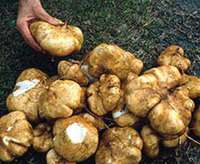
Figure 3. Tubers of Jicama (Pachyrrhizus erosus),well adapted to hot, humid climate.
Root and tuber crops throughout the world include: (1) annual, enlarged roots and tubers of little food value and (2) perennial roots and tubers high in starch. These structures are used by the plant for regrowth after an unfavorable season. Roots and tubers are widely used throughout the tropics as staple crops, and indeed are major sources of carbohydrates. Because they are limited in protein, excessive reliance upon them for food may be detrimental to health. It is difficult to pick the best because each has its advantages and disadvantages; however, cassava is the worst because of its low, poor-quality protein. Some people favor the sweet potato because it can be produced in four months, leaving the ground free for other crops. Root and tuber crops are usually widely adapted and easy to grow, but there is frequently a problem of obtaining good varieties.
|
Table 5. A Comparison Chart of Roots and Tubers |
|||||||||||
|
|
|
|
|
|
Edible Parts, Uses |
|
|
Adaptation |
|
|
|
|
Common Name |
Species Name |
Annual, Bi/ Perennial |
Propa- gation |
Growth Habit |
Principal Uses |
Temp. |
Day- Length |
Flood |
Dry |
Negative Factors |
|
|
Beet |
Beta vulgaris |
bi, grown as annual |
seed |
herbaceous |
roots, leaves cooked |
roots- low nutrients |
cool |
neutral |
no |
no |
temperate climate |
|
Carrot |
Dacus carota |
bi, grown as annual |
seed |
herbaceous |
roots, raw or cooked |
high in vit. A |
cool / warm |
neutral |
no |
no |
temperate climate |
|
Cassava |
Manihot esculenta |
per. grown as annual |
cutting |
bush |
tuberous root, leaf, cooked |
starch |
hot |
short day |
no |
no |
some var. poisonous untreated |
|
Dasheen |
Colocasia esculenta |
per. grown as annual |
offshoot |
herbaceous |
corm, cooked |
starch, vit. C |
hot |
short day |
some |
no |
|
|
Edible Canna |
Canna edulis |
per. grown as annual |
offshoot |
upright herbaceous |
rhizome, cooked |
starch |
hot |
neutral |
some |
no |
poor quality vegetable |
|
Jícama |
Pachyrrhizus erosus |
weak per. used as annual |
seed |
vining |
tuberous root, cooked |
starch, protein |
hot |
neutral |
no |
some |
pods, leaf poisonous |
|
Potato |
Solanum tuberosum |
per. grown as annual |
tuber cutting |
herbaceous |
tuber, cooked |
starch, vit. C |
cool / warm |
neutral |
no |
no |
not tropical |
|
Sweet Potato |
Ipomea batatas var. batatas |
per. grown as annual |
cutting |
trailing vine |
vine tips & tuberous root, cooked |
starch, vit. C, maybe A |
hot |
mostly short day |
no |
no |
insect problems |
|
Tanier |
Xanthosoma spp. |
per. grown as annual |
offshoot |
herbaceous |
corm, cooked |
starch |
hot |
mostly short day |
some |
no |
disease problems |
|
Taro |
Colocasia esculenta |
per. grown as annual |
offshoot |
herbaceous |
corm, cooked |
starch, vit. C |
hot |
mostly short day |
yes |
no |
needs paddy culture |
|
Yam |
Dioscorea spp. |
per. grown as annual |
tuber cutting |
climbing vine |
tuber, cooked |
starch, protein |
hot |
mostly neutral |
some |
no |
very seasonal |
|
Table 6. Uses and Ratings (0-5) of Use for Selected Root and Tuber Crops. |
|||||||||
|
Common Name |
Food Uses |
Food |
Feed |
Fiber |
Construction |
Fuel |
Soil Amend. |
Erosion Control |
Modify Climate |
|
African Yam Bean |
root, fresh dried seed |
4 |
1 |
0 |
0 |
0 |
1 |
0 |
0 |
|
Ahipa |
root |
3 |
1 |
0 |
0 |
0 |
2 |
1 |
0 |
|
Arrowroot |
rhizome |
3 |
2 |
0 |
0 |
0 |
0 |
1 |
0 |
|
Cassava |
root, leaves |
4 |
4 |
0 |
1 |
1 |
0 |
1 |
0 |
|
Edible canna |
corm |
2 |
1 |
0 |
0 |
0 |
0 |
1 |
0 |
|
Potato |
tuber |
5 |
3 |
0 |
0 |
0 |
0 |
1 |
0 |
|
Sweet potato |
root, leaves |
5 |
5 |
0 |
0 |
0 |
0 |
2 |
0 |
|
Tannier |
corm, leaves |
5 |
0 |
0 |
0 |
0 |
0 |
1 |
0 |
|
Taro |
corm, leaves |
5 |
0 |
0 |
0 |
0 |
0 |
1 |
0 |
|
Yam |
tuber |
5 |
0 |
0 |
0 |
0 |
0 |
2 |
1 |
|
Yam bean |
root |
4 |
1 |
0 |
0 |
0 |
1 |
0 |
0 |
PLANTS FOR FOOD: VEGETABLE CROPS
Leguminous Vegetables:
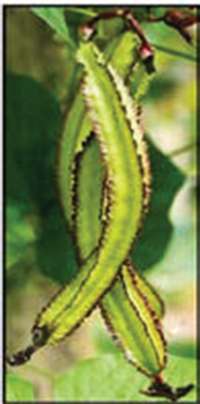
Figure 4. Winged Bean (Psophocarpus tetragonolobus) pods- may be eaten fresh when young and flexible.
Legumes are excellent providers of at least some of most nutrients. However, they are subject to many disease and insect problems. The challenge with these crops is to find those that are well suited to a particular area and that will produce a crop throughout the year. This is a difficult, but all can be produced from seeds. Winged beans may also be propagated by tubers. Some produce a crop in winter and some in summer. Therefore, developing a selection of leguminous vegetables for a farming area requires careful trials of both species and available varieties, with attention to seasonal parameters for optimal production. Generally, several selections are desirable to assure year-round production.
|
Table 7. A Comparison of Leguminous Vegetables. |
||||||||||
|
|
|
|
|
Edible Parts, Uses |
|
|
Adaptation |
|
|
|
|
Common Name |
Species Name |
Annual/ Perennial |
Growth Habit |
Principal Nutrients |
Temp. |
Day- Length |
Flood |
Dry |
Negative Factors |
|
|
Bean, Common |
Phaseolus vulgaris |
annual |
vine or bush |
pod, dry seed |
general nut., starch |
warm |
mostly neutral |
no |
no |
|
|
Chickpea, Garbanzo |
Cicer arietinum |
annual |
bush |
undried and dry seed |
protein, starch |
cool to warm |
mostly neutral |
no |
some |
|
|
Cowpea |
Vigna unguiculata |
annual |
bush or vine |
undried and dry seed |
protein, starch |
hot |
mostly neutral |
no |
some |
|
|
Faba bean |
Vicia faba |
annual |
bush |
pod, dry and undried seed |
protein, starch |
warm |
mostly neutral |
no |
some |
consumption related to a disease |
|
Jack bean |
Canavalia ensiformis |
annual |
mostly bush |
small young pod |
protein, starch |
hot |
neutral /short day |
some |
no |
poisonous and risky to use when older |
|
Lablab |
Lablab purpureus |
weak perennial |
vine or bush |
dry and undried seed, pod |
protein, starch |
hot |
short day |
some |
some |
excessive vining in summer |
|
Lima bean |
Phaseolus lunatus |
annual |
vine or bush |
undried seed |
protein, starch |
warm to hot |
mostly neutral |
no |
no |
|
|
Pea |
Pisum sativum |
annual |
weak vine |
pod, dry, undried seed |
protein, starch |
cool to warm |
Neutral |
no |
no |
strictly temperate |
|
Peanut |
Arachis hypogaea |
annual |
Bush |
dry and undried seed |
oil, high protein |
hot |
mostly neutral |
no |
some |
wet seeds become poisonous |
|
Pigeon Pea |
Canjanus cajun |
weak perennial |
tall bush |
dry and undried seed |
protein, starch |
hot |
neutral /short day |
no |
no |
|
|
Soybean |
Glycine max |
annual |
bush |
dry and undried seed |
oil, starch, high protein |
warm to hot |
short day |
no |
no |
often needs rhizobium inoculant |
|
Sword Bean |
Canavalia gladiata |
annual |
vine |
young pod |
protein, starch |
hot |
Neutral |
no |
no |
pods and beans may be slightly poisonous |
|
Winged Bean |
Psophocarpus tetragonolobus |
weak perennial |
vine |
young pod, leaf, root, flower |
oil, starch, high protein |
hot |
neutral/ short day |
yes |
no |
|
|
Yardlong Bean |
Vigna unguiculata ssp. sesquipedalis |
annual |
vine |
pod |
general nutrients |
hot |
mostly neutral |
no |
no |
|
|
Table 8. Uses and Ratings (0-5) of Uses for Selected Leguminous Vegetables |
||||||||
|
Common Name |
Food |
Feed |
Fiber |
Construction |
Fuel |
Soil Amend. |
Erosion Control |
Modify Climate |
|
Basul |
4 |
3 |
0 |
2 |
3 |
4 |
2 |
2 |
|
Common bean |
5 |
3 |
0 |
0 |
1 |
2 |
1 |
0 |
|
Cowpea |
5 |
3 |
0 |
0 |
1 |
2 |
2 |
1 |
|
Horse bean |
1 |
3 |
0 |
0 |
0 |
2 |
2 |
1 |
|
Inga |
2 |
2 |
0 |
2 |
2 |
2 |
1 |
1 |
|
Lablab bean |
4 |
4 |
0 |
0 |
0 |
3 |
3 |
1 |
|
Lima bean |
4 |
0 |
0 |
0 |
0 |
2 |
1 |
1 |
|
Mat bean |
3 |
3 |
0 |
0 |
0 |
1 |
1 |
0 |
|
Mung bean |
4 |
2 |
0 |
0 |
0 |
1 |
1 |
0 |
|
Paterno |
2 |
2 |
0 |
2 |
3 |
2 |
2 |
1 |
|
Peanut |
5 |
4 |
0 |
0 |
0 |
3 |
2 |
0 |
|
Pigeon pea |
4 |
3 |
0 |
0 |
1 |
3 |
2 |
0 |
|
Rice bean |
3 |
1 |
0 |
0 |
0 |
1 |
1 |
0 |
|
Soybean |
5 |
5 |
0 |
0 |
1 |
3 |
1 |
1 |
|
Tarwi |
3 |
1 |
0 |
0 |
0 |
1 |
1 |
0 |
|
Tepary bean |
3 |
1 |
0 |
0 |
0 |
1 |
1 |
0 |
|
Sword bean |
2 |
2 |
0 |
0 |
0 |
2 |
2 |
1 |
|
Winged bean |
4 |
3 |
0 |
0 |
0 |
3 |
2 |
1 |
|
Yardlong bean |
5 |
2 |
0 |
0 |
0 |
1 |
1 |
1 |
Non-Leguminous Fruit Vegetables:
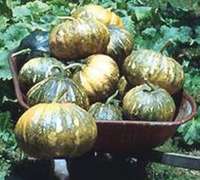
Figure 5. Tropical Pumpkin (Cucurbita moschata) fruits.
Fruit vegetables are a miscellaneous classification that includes some produce with very excellent and some with practically no food value. There are many hundreds in the tropics, yet a relatively small number, as listed here, are proven favorites almost everywhere. Some favor the tropical pumpkin because of its high nutritive value and the many ways it can be prepared for food. The pepper and the tomato, in spite of differences in appearance and use, have much the same nutritive value. Cucumber, eggplant, melon and watermelon are interesting and entertain the palate, but they have low food value. Most are propagated by seeds, and some can also be propagated by cuttings. Except for okra, a summer vegetable, they can be produced at any time of the year. Variety is almost always important when selecting a fruit vegetable. Finding an appropriate variety may require extensive search and trial.
|
Table 9. A Comparison of Fruit Vegetables. |
|||||||||
|
Common Name |
Species Name |
Annual/ Perennial |
Growth Habit |
Edible Parts, Uses |
Principal Nutrients |
|
Adaptation |
|
Negative Factors |
|
Temp. |
Flood |
Dry |
|||||||
|
Angled loofa |
Luffa acutangula |
annual |
climbing vine |
young fruit |
low nut. value |
hot |
no |
no |
poisonous seeds |
|
Bitter gourd |
Momordica charantia |
annual |
climbing vine |
young fruit |
vit. C |
hot |
no |
yes |
very bitter |
|
Bottle gourd |
Lagenaria siceraria |
annual |
climbing vine |
young fruit, seed |
low nut. value, seed high in oil & protein |
warm / hot |
no |
no |
low nut. value |
|
Cucuzzi, Italian |
Lagenaria siceraria |
annual |
climbing vine |
young fruit, seed |
low nut. value, seed high in oil & protein |
warm / hot |
no |
no |
low nut. value |
|
Chayote |
Sechium edulis |
perennial |
climbing vine |
mature fruit, vine tips, roots |
tips high in vitamins, minerals |
warm |
some |
no |
needs cool nights |
|
Eggplant |
Solanum melongena |
weak perennial |
bush |
young fruit |
low nut. value |
warm / hot |
no |
some |
low nut. value |
|
Okra |
Abelmoschus esculentus |
annual |
bush |
young fruit, dried seed |
fair source of most nutrients |
hot |
no |
some |
summer only |
|
Pepper |
Capsicum annuum |
weak perennial |
bush |
young/mature fruit, leaves |
vit. A & C |
warm / hot |
no |
some |
virus susceptible |
|
Pumpkin tropical |
Cucurbita moschata |
weak perennial |
trailing vine |
young/mature fruit, seeds, vine tips |
vit. A & C, seed high in oil & protein |
hot |
some |
no |
mildew |
|
Snake gourd |
Trichosanthes cucumerina |
annual |
climbing vine |
young fruit |
low nut. value |
hot |
no |
no |
poor quality |
|
Sponge gourd |
Luffa cylindrica |
annual |
climbing vine |
young fruit, mature sponges |
low nut. value |
hot |
no |
no |
low nut. value |
|
Tomato |
Lycopersicon esculentum |
annual / weak perennial |
bush or weak vine |
young/mature fruit |
vit. A & C |
warm |
no |
no |
many diseases |
|
Wax gourd |
Benincasa hispida |
annual |
climbing vine |
young fruit, seed or oil |
low nut. value, seed high in oil & protein |
hot |
no |
no |
low nut. value |
|
Table 10. Uses and Rating (0-5) of Uses for Selected Tropical Fruit Vegetables. |
||||||||
|
Common Name |
Food |
Feed |
Fiber |
Construction |
Fuel |
Soil Amend. |
Erosion Control |
Modify Climate |
|
Bitter gourd |
3 |
0 |
0 |
0 |
0 |
0 |
1 |
0 |
|
Chayote |
2 |
1 |
0 |
0 |
0 |
0 |
2 |
1 |
|
Melon |
3 |
1 |
0 |
0 |
0 |
0 |
1 |
0 |
|
Okra |
4 |
1 |
0 |
0 |
2 |
0 |
1 |
0 |
|
Pepper |
5 |
0 |
0 |
0 |
0 |
0 |
0 |
0 |
|
Pumpkin |
5 |
3 |
0 |
0 |
0 |
0 |
1 |
1 |
|
Tomato |
4 |
0 |
0 |
0 |
0 |
0 |
0 |
0 |
Leafy Vegetables:
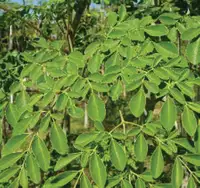
Figure 6. Highly nutritious leaves of Drumstick (Moringa oleifera) tree. Source: Tim Motis.
As a rule, leaves have high value as food, especially the dark green leaves, but always contain too much fiber and often contain various antinutrients such as oxalic acid. Leaves as a part of the diet can eliminate blindness in children caused by a lack of sufficient vitamin A in their diet. There are many leafy vegetables to choose from. A good rule is to vary them in the diet. A half-cup of cooked leaves every day is a good amount to consume.
Most of the typical tropical leafy vegetables do not have varietal names, but all of them are highly adapted to tropical conditions.
|
Table 11. A Comparison of Leafy Vegetables. |
||||||||||||
|
|
|
|
|
|
Edible Parts, Uses |
|
|
|
Adaptation |
|
|
|
|
Common Name |
Species Name |
Annual/ Perennial |
Propa- gation |
Growth Habit |
Relative Yield |
Relative Quality |
Temp. |
Day- length |
Flood |
Dry |
Negative Factors |
|
|
Amaranth |
Amaranthus gangeticus, A. tricolor A. hypochondriacus |
annual |
seed |
herb |
leaf, whole plant, cooked |
high |
high |
hot |
mostly short day |
no |
some |
short life span, insects |
|
Belembe |
Xanthosoma brasiliense |
perennial |
off- shoot |
herb |
leaf and stem, cooked |
low |
very high |
hot |
neutral |
yes |
no |
low production |
|
Bok choi |
Brassica rapa subsp. chinensisis |
annual |
seed |
herb |
leaf, head, raw or cooked |
med |
med |
cool to warm |
neutral |
no |
no |
|
|
Bush okra |
Corchous olitorius |
annual |
seed |
herb |
leaf and hoot, cooked |
high |
med |
hot |
neutral |
no |
some |
weedy |
|
Cassava |
Manihot esculenta |
perennial |
cutting |
bush |
leaf and shoot, cooked |
med |
med |
hot |
neutral |
no |
some |
needs cooking or is toxic |
|
Chaya |
Cnidoscolus chayamansa |
perennial |
cutting |
bush |
leaf and shoot, cooked |
very high |
high |
warm to hot |
neutral |
some |
some |
somewhat toxic |
|
False roselle |
Hibiscus acetosella |
weak perennial |
seed |
bush |
leaf and shoot, cooked |
med |
med |
warm to hot |
short day |
no |
some |
weedy nature |
|
Horseradish tree |
Moringa oleifera |
perennial |
seed, cutting |
tree |
leaf, young fruit, flower, root |
very high |
high |
hot |
neutral |
no |
some |
too vigorous |
|
Indian lettuce |
Lactuca Indica |
annual |
seed, cutting |
tall herb |
leaf, raw |
high |
high |
warm to hot |
short day no |
no |
very tall |
|
|
Kai choi |
Brassica juncea |
annual |
seed |
herb |
leaf, head, raw or cooked |
med |
high |
warm |
neutral |
no |
no |
|
|
Kale, Ethiopian |
Brassica carinata |
annual |
seed |
herb |
leaf, raw or cooked |
high |
med |
warm |
neutral |
no |
no |
|
|
Katuk |
Sauropus androgynus |
perennial |
seed, cutting |
bush |
shoot, cooked |
med |
high |
hot |
neutral |
no |
no |
|
|
Lagos spinach |
Celosia argentea |
annual |
seed |
herb |
leaf and shoot, cooked |
high |
med |
hot |
short day |
no |
no |
weedy |
|
Lettuce |
Lactuca sativa |
annual |
seed |
herb |
leaf, head, raw |
medium |
medium |
cool to warm |
short day |
no |
no |
|
|
Spinach, Malabar |
Basella rubra |
perennial |
seed, cutting |
climbing vine |
leaf and shoot, cooked |
high |
low |
hot |
short day |
no |
no |
fruits during short days |
|
Spinach, pacific |
Abelmoschus manihot |
perennial |
cutting |
tall bush |
leaf and shoot, cooked |
high |
medium |
hot |
short day |
no |
no |
slimy when cooked |
|
Spinach, water |
Ipomea aquatica |
perennial |
cutting seed |
trailing vine |
leaf and shoot, cooked |
high |
low |
warm to hot |
short day |
yes |
no |
weedy in canals |
|
Sweet potato |
Ipomea batatas |
perennial |
cutting |
trailing vine |
shoot, cooked |
medium |
medium |
hot |
short day |
no |
no |
weevils |
|
Table 12. Uses and Ratings (0-5) of Uses for Selected Leafy Vegetables. |
||||||||
|
Common Name |
Food |
Feed |
Fiber |
Construction |
Fuel |
Soil Amend. |
Erosion Control |
Modify Climate |
|
Amaranth |
5 |
1 |
0 |
0 |
1 |
0 |
0 |
0 |
|
Belembe |
5 |
1 |
0 |
0 |
0 |
0 |
0 |
0 |
|
Cassava |
5 |
5 |
0 |
1 |
1 |
0 |
1 |
0 |
|
Ceylon spinach |
4 |
0 |
0 |
0 |
0 |
0 |
1 |
1 |
|
Chaya |
4 |
1 |
0 |
0 |
0 |
0 |
1 |
0 |
|
Horseradish tree |
5 |
3 |
0 |
0 |
1 |
1 |
2 |
2 |
|
Indian lettuce |
4 |
3 |
0 |
0 |
0 |
0 |
0 |
0 |
|
Indian mustard |
5 |
4 |
0 |
0 |
0 |
0 |
0 |
0 |
|
Kangkong |
5 |
3 |
0 |
0 |
0 |
0 |
1 |
1 |
|
Katuk |
5 |
2 |
0 |
1 |
0 |
1 |
1 |
0 |
|
Leucaena |
4 |
4 |
0 |
2 |
4 |
4 |
3 |
2 |
|
Okinawa spinach |
3 |
2 |
0 |
0 |
0 |
1 |
2 |
0 |
|
Pacific spinach |
5 |
2 |
0 |
0 |
0 |
1 |
1 |
0 |
|
Lagos spinach |
4 |
0 |
0 |
0 |
0 |
1 |
1 |
0 |
|
Sissoo spinach |
3 |
0 |
0 |
0 |
0 |
1 |
3 |
0 |
|
Sweet Potato |
5 |
5 |
0 |
0 |
0 |
0 |
3 |
0 |
|
Watercress |
5 |
3 |
0 |
0 |
0 |
0 |
0 |
0 |
Miscellaneous Vegetables:
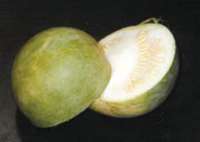
Figure 7. Egusi Melon (Citrullus lanatus) fruit
Some of the very best of the tropical vegetables do not conveniently fit into any other category. The edible part is highly variable, and production is often inefficient (however, water chestnut is very highly productive). Most of these species are perennials. Almost all are of high quality. Taken as a group, they are highly valuable, gourmet species. Few of these vegetables have selected varieties.
Many are easy to grow and successful almost everywhere. They are all worth trying where space permits. In some cases, the production technology and markets for these crops has already been developed.
|
Table 13. A Comparison of Miscellaneous Vegetables. |
|||||||||||
|
Common Name |
Species Name |
Annual/ Perennial |
Propa- gation |
Growth Habit |
Edible Parts, Uses |
Principal Nutrients |
|
Adaptation |
|
Negative Factors |
|
|
Temp. |
Day- Length |
Flood |
Dry |
||||||||
|
Asparagus |
Asparagus officinale |
perennial |
seed offshoot |
bush, large rhizomes |
young tender shoots, cooked Pickled |
vit. C |
cool to warm |
neutral |
no |
some |
|
|
Buffalo gourd |
Cucurbita foetidissima |
perennial |
seed |
bush / vine |
seed for oil and flour |
oil, high protein |
warm to hot |
|
no |
yes |
|
|
Bunching onion |
Allium fisulosum |
perennial |
seed offshoot |
herb with bulb |
entire plant as condiment |
vit. C |
cool to warm |
short day |
no |
no |
|
|
Chinese chives |
Allium tuberosum |
perennial |
offshoot |
herb |
green foliage as spinach |
vit. A & C |
warm to hot |
short day |
no |
no |
|
|
Coconut sprout |
Cocos nucifera |
perennial |
seed |
tall tree |
root ball after germination |
|
hot |
neutral |
some |
some |
|
|
Egusi |
Citrullus lanatus |
annual |
seed |
trailing vine |
roasted seed as snack or ground |
high protein |
warm to hot |
|
no |
yes |
|
|
Izote |
Yucca spp. |
perennial |
seed cutting |
large woody bush |
mature bud and flower raw or cooked, heart must be cooked |
flower-vit. C, heart- calcium |
warm to hot |
neutral |
no |
no |
chiefly for other uses, inefficient production |
|
Onion |
Allium cepa |
perennial |
seed bulbs |
herb |
bulb as a condiment |
vit. C |
warm |
short day no |
no |
specific varieties & planting dates |
|
|
Pitpit |
Setaria palmifolia |
perennial |
cutting |
large grass |
bottled up flower cooked as vegetable |
protein |
hot |
short day |
some |
no |
inefficient production |
|
Rhubarb |
Rheum rhaponti |
annual in tropics |
seed offshoot |
large herb |
petioles cooked |
vit. C |
cool to warm |
neutral |
some |
no |
mostly temperate |
|
Roselle |
Hibiscus sabdariffa |
annual |
seed |
large woody herb |
calyxes of pod as fruit |
vit. C |
warm |
short day no |
some |
|
|
|
Sweet Corn |
Zea mays |
annual |
seed |
tall herb |
immature ear |
carbo- hydrate, P, niacin |
warm |
short day to neutral |
no |
no |
|
|
Table 14. Uses and Ratings (0-5) of Uses for Miscellaneous Vegetables. |
||||||||
|
Common Name |
Food |
Feed |
Fiber |
Construction |
Fuel |
Soil Amend. |
Erosion Control |
Modify Climate |
|
Bamboo |
3 |
2 |
0 |
4 |
3 |
0 |
4 |
4 |
|
Coconut sprout |
5 |
4 |
3 |
4 |
2 |
2 |
4 |
4 |
|
Izote |
2 |
1 |
1 |
0 |
0 |
0 |
1 |
0 |
|
Pacaya |
3 |
0 |
0 |
0 |
0 |
0 |
1 |
0 |
|
Palm hearts |
3 |
1 |
1 |
3 |
2 |
2 |
1 |
1 |
|
Pitpit |
2 |
2 |
0 |
0 |
0 |
1 |
2 |
0 |
|
Sweet corn |
4 |
2 |
0 |
1 |
1 |
0 |
1 |
0 |
|
Water chestnut |
4 |
0 |
0 |
0 |
0 |
0 |
0 |
0 |
Plants for Food: Fruit and Nut Crops
Basic Survival Fruits:
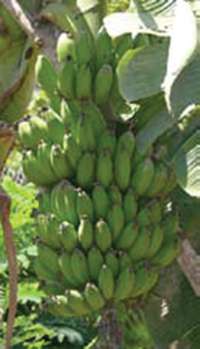
Figure 8. Fruit of a FHIA (Honduran Foundation for Agricultural Research) banana (Musa spp.) variety with resistance to the fungal disease, Black Sigatoka.
The banana, plantain, breadfruit, and coconut are basic survival foods with much in common with the root and tuber crops. However, they are high in carbohydrates and low in protein. These crops can be grown on most farms in the tropics. They produce a lot of food for the efforts necessary to grow them. They might be seasonal, however, and by themselves they are not a complete diet. It is very difficult to add even one more species to this short, valuable list. These fruits probably occur already in every region where climate and soils permit. If not, they need introduction. These common fruits are often unappreciated for their fine qualities.
|
Table 15. A Comparison of Basic Survival Fruits. |
||||||||
|
Common Name |
Species Name |
Propagation |
Growth Habit |
Edible Parts, Uses |
Principal Nutrients |
Adaptation |
||
|
Temp. |
Flood |
Dry |
||||||
|
Banana/ Plantain |
Musa spp. |
offshoots |
large herb |
fruit, raw, cooked |
starch |
hot |
some |
little |
|
Breadfruit |
Artocarpus altilis |
root cuttings |
med. tree |
fruit cooked |
starch |
hot |
some |
some |
|
Coconut |
Cocos nucifera |
seeds |
tall palm |
fruit, many uses |
protein, oil |
hot |
some |
some |
|
Table 16. Uses and Ratings (0-5) of Uses for Basic Survival Fruits. |
||||||||
|
Common Name |
Food |
Feed |
Fiber |
Construction |
Fuel |
Soil Amend. |
Erosion Control |
Modify Climate |
|
Banana |
5 |
4 |
1 |
1 |
0 |
1 |
1 |
1 |
|
Plantain |
4 |
3 |
0 |
0 |
0 |
0 |
2 |
0 |
|
Breadfruit |
4 |
3 |
0 |
1 |
1 |
1 |
2 |
2 |
|
Coconut |
5 |
4 |
3 |
4 |
2 |
2 |
4 |
4 |
High Value Fruits:
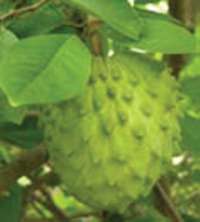
Figure 9. Atemoya (Annona cherimola X A. squamosa), a delicious dessert fruit. Source: Tim Motis
The tropics are rich in highly varied, delicious and nutritive fruits. Of the hundreds that exist, only a few of the most superb and easy-to-grow (e.g. prickly pear) fruits are listed here. Fruits that are high in nutritive value, easy to grow, and versatile in their use will be especially beneficial on the small farm.
|
Table 17. A Comparison of Selected Tropical Fruit Crops. |
|||||||||
|
Common Name |
Species Name |
Propagation |
Growth Habit |
Edible Parts, Uses |
Principal Nutrients |
Adaptation |
|
Negative Factors |
|
|
|
|
|
Temp. |
Flood |
Dry |
||||
|
Atemoya |
Annona hybrid |
grafts |
small tree |
fruit, raw |
vit. C |
warm |
no |
some |
|
|
Avocado |
Persia americana |
seed, grafts |
med. tree |
fruit, raw |
oil |
warm to hot |
no |
some |
|
|
Banana |
Musa spp. |
offshoots |
large herb |
fruit, raw, cooked |
starch |
hot |
some |
little |
|
|
Black sapote |
Diospyros digyna |
seed, graft |
med. tree |
fruit, cooked |
carbohydrate |
hot |
some |
no |
|
|
Breadfruit |
Artocarpus altilis |
root cuttings |
med. tree |
fruit, cooked |
starch |
hot |
some |
some |
|
|
Canistel |
Pouteria campechiana |
seed, grafts |
small tree |
fruit, raw, processed |
starch, vit. A & C |
hot |
no |
some |
|
|
Carambola |
Averrhoa carambola |
seed, grafts |
small tree |
fruit, raw |
vit. C |
hot |
some |
no |
|
|
Cherimoya |
Annon cherimola |
seed, grafts |
med. tree |
fruit, raw |
vit. C |
hot |
no |
no |
|
|
Citrus |
Citrus spp. |
grafts |
med. tree |
fruit, raw |
vit. A & C |
warm to hot |
no |
some |
|
|
Coconut |
Cocos nucifera |
seed |
tall palm |
fruit, many uses |
protein, oil |
hot |
some |
some |
|
|
Date |
Phoenix dactylifera |
seed, offshoots |
tall palm |
fruit, dried |
carbohydrate |
very hot |
no |
yes |
|
|
Durian |
Durio zibethinus |
seed, grafts |
large tree |
fruit, raw |
protein, carbohydrate |
hot |
some |
no |
odor of fruit |
|
Guava |
Psidium guajava |
seed, airlayers |
small tree |
fruit, raw, cooked |
vit. C |
hot |
some |
some |
|
|
Jaboticaba |
Myrciaria cauliflora |
seed, grafts |
small tree |
fruit, raw |
vit. C |
warm |
some |
no |
needs cool winter |
|
Jackfruit |
Artocarpus heterophyllus |
seed, grafts |
med. tree |
fruit, raw |
vit. A & C |
hot |
some |
no |
|
|
Lansium (Langsat) |
Lansium domesticum |
seed |
med. tree |
fruit, raw |
|
hot |
some |
no |
|
|
Lychee |
Litchi chinensis |
seed, airlayers |
med. tree |
fruit, raw |
vit. C |
warm |
no |
no |
needs cool winter |
|
Loquat |
Eriobotrya japonica |
seed, grafts |
med. tree |
fruit, raw, cooked |
vit. A & C |
warm to hot |
no |
no |
|
|
Mango |
Mangifera indica |
grafts |
tall tree |
fruit, raw, cooked |
vit. A & C |
hot |
some |
some |
|
|
Mamey sapote |
Pouteria sapote |
seed, grafts |
med. tree |
fruit, raw |
vit. C |
warm to hot |
no |
some |
|
|
Mammy apple |
Mammea americana |
seed, grafts |
large tree |
fruit, raw, cooked |
vit. A & C |
hot |
some |
some |
somewhat poisonous |
|
Papaya |
Carica papaya |
seed |
large tree |
fruit, raw |
vit. A & C |
hot |
some |
some |
fruit too soft |
|
Passion fruit |
Passiflora edulis |
seed, cuttings |
vine |
fruit, raw juice |
vit. A & C |
warm to hot |
some |
some |
|
|
Rambutan |
Nephelium lappaceum |
seed, grafts |
med. tree |
fruit, raw |
vit. C |
hot |
some |
no |
|
|
Salak |
Salacca zalacca |
seed, grafts |
small palm |
fruit, raw |
|
very hot |
yes |
no |
|
|
Tamarind |
Tamarindus indica |
seed, offshoots |
large tree |
fruit, raw juice |
vit. C |
hot |
no |
yes |
|
|
White sapote |
Casimiroa edulis |
seed, grafts |
med. tree |
fruit, raw |
vit. C |
warm |
no |
some |
|
|
Table 18. Uses and Ratings (0-5) of Uses for Selected High Value Fruits |
||||||||
|
Common Name |
Food |
Feed |
Fiber |
Construction |
Fuel |
Soil Amend. |
Erosion Control |
Modify Climate |
|
Avocado |
5 |
1 |
0 |
1 |
1 |
2 |
1 |
2 |
|
Canistel |
4 |
0 |
0 |
1 |
2 |
1 |
1 |
1 |
|
Citrus |
5 |
2 |
0 |
1 |
2 |
1 |
1 |
1 |
|
Date |
5 |
4 |
3 |
3 |
2 |
1 |
1 |
3 |
|
Durian |
3 |
1 |
0 |
3 |
3 |
2 |
1 |
3 |
|
Guava |
5 |
3 |
0 |
0 |
3 |
2 |
1 |
0 |
|
Mango |
5 |
3 |
0 |
3 |
3 |
3 |
1 |
4 |
|
Papaya |
5 |
1 |
0 |
0 |
0 |
1 |
1 |
0 |
|
Passion fruit |
4 |
0 |
0 |
0 |
0 |
1 |
2 |
1 |
|
Peach palm |
4 |
3 |
0 |
2 |
1 |
2 |
1 |
1 |
|
Pineapple |
4 |
2 |
0 |
0 |
0 |
0 |
1 |
0 |
|
Prickly pear |
3 |
1 |
0 |
0 |
0 |
0 |
1 |
0 |
Outstanding Nuts:
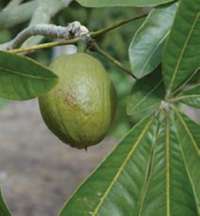
Figure 10. Guinea Peanut (Pachira glabra) fruit, similar to Malabar Chestnut (P. aquatica). Fruits split open when ripe, revealing seeds used as nuts. Source: Tim Motis
Nuts are concentrated packages of high nutritional value, almost always protein, oil, and B and E vitamins. Most can be stored. All are good foods, and some are of gourmet quality. They are often not widely adapted but always worth producing on the small farm. In selecting nut crops for the small farm, special attention should be given to size of the tree and years to maturity. Most of the nut species (except macadamia) are not found as named varieties. Generally, special technologies for producing these species have yet to be developed. However, this does not make them less valuable.
|
Table 19. A Comparison of Nut Crops. |
||||||
|
Common Name |
Species Name |
Propagation |
Edible Parts,and Uses |
Principal Nutrients |
Adaptation |
|
|
|
|
|
Flood |
Dry |
||
|
African breadfruit |
Treculia africana |
seed |
seed |
protein |
yes |
no |
|
African walnut |
Coula edulis |
seed |
seed |
protein |
yes |
some |
|
Basul |
Erythrina edulis |
seed |
seed, foliage |
|
|
|
|
Betelnut |
Areca catechu |
seed,offshoots |
none |
alkaloids |
yes |
no |
|
Breadnut |
Artocarpus altilis |
seed,offshoots |
seed |
carbohydrate |
yes |
no |
|
Canary nut |
Canarium indicum |
seed |
seed |
protein |
no |
yes |
|
Cashew |
Anacardium occidentale |
seed, grafts |
|
protein |
no |
yes |
|
Coconut |
Cocos nucifera |
seed |
seed, other |
protein |
yes |
no |
|
Guiana-chestnut |
Pachira aquatica |
seed |
seed |
oil |
yes |
no |
|
Jackfruit |
Artocarpus heterophyllus |
seed, grafts |
seed, pulp |
carbohydrate |
yes |
no |
|
Macadamia |
Macadamia spp. |
seed, grafts |
seed |
protein |
some |
some |
|
Mamey sapote |
Pouteria sapota |
seed, grafts |
pulp, seed |
protein |
no |
some |
|
Mexican breadnut |
Brosimum alicastrum |
seed |
|
|
yes |
no |
|
Okari nut |
Terminalia kaernbachii |
seed |
seed |
protein, oil |
yes |
no |
|
Paradise nut |
Lecythis zabucaja |
seed |
seed |
protein |
some |
no |
|
Paterno |
Inga jinicuil |
seed |
seed |
carbohydrate |
no |
some |
|
Peach palm |
Bacrtis gasipaes |
seed,offshoots |
seed, pulp |
carbohydrate |
yes |
no |
|
Pili nut |
Canarium ovatum |
seed, grafts |
seed, pulp |
protein |
yes |
no |
|
Spanish joint fir |
Gnetum genemon |
seed |
seed |
protein |
some |
no |
|
Tahiti chestnut |
Inocarpus fagifer |
seed |
seed |
|
some |
|
|
Tropical almond |
Terminalia catappa |
seed |
seed |
protein, oil |
yes |
no |
|
Table 20. Uses and Ratings (0-5) of Uses for Some Selected Nuts. |
||||||||
|
Common Name |
Food |
Feed |
Fiber |
Construction |
Fuel |
Soil Amend. |
Erosion Control |
Modify Climate |
|
Breadnut |
4 |
2 |
0 |
2 |
2 |
2 |
1 |
3 |
|
Cashew |
4 |
0 |
0 |
0 |
0 |
2 |
3 |
1 |
|
Coconut |
5 |
4 |
3 |
4 |
2 |
2 |
4 |
4 |
|
Indian almond |
3 |
1 |
0 |
3 |
3 |
2 |
1 |
3 |
|
Jackfruit |
4 |
2 |
0 |
3 |
3 |
0 |
0 |
3 |
|
Joint fir |
4 |
2 |
1 |
2 |
2 |
2 |
1 |
2 |
|
Macadamia |
5 |
0 |
0 |
1 |
1 |
2 |
1 |
1 |
|
Malabar chestnut |
5 |
2 |
0 |
2 |
1 |
2 |
1 |
2 |
|
Paradise nut |
3 |
0 |
0 |
1 |
1 |
1 |
1 |
1 |
|
Pili nut |
5 |
3 |
0 |
2 |
2 |
2 |
1 |
2 |
|
Tahiti chestnut |
3 |
2 |
0 |
2 |
2 |
3 |
1 |
2 |
Plants for Food: Beverages, Oil, Spices, and Sugar
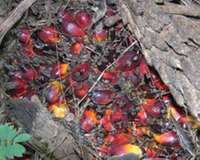
Figure 11. Nuts of African Oil Palm (Elaeis guineensis). Source: Tim Motis
The beverage crops, by themselves, are highly appreciated as stimulants but have little nutritional value. There are many good species of oil palms, particularly in South America, but the African Oil Palm continues to dominate the world’s markets. The oil from palms contains more than desirable amounts of the saturated fatty acids and is not as desirable in the diet as that of other oil sources including corn, soybean, and olives.
Spices are delightful to grow but are priced low in world markets and have little food value. Condiment herbs are useful on any small farm. Each has its special needs and its particular adaptations.
Sugarcane continues to be a common and easily grown source of sugar. Starch can be extracted from root and tuber crops, but is especially abundant in sago palms.
The production and marketing of specialty food crops is usually associated with definite regions and established markets. Some of these crops, however, may be suitable for small-scale use on the small farm.
|
Table 21. A Comparison of Some Specialty Crops. |
||||||||
|
Common Name |
Species Name |
Annual/ Perennial |
Growth Habit |
Temp. |
Adaptation |
|
Other uses |
|
|
|
Day-length |
Flood |
Dry |
|
||||
|
BEVERAGES |
||||||||
|
Cacao |
Theobroma cacao |
perennial |
small tree |
hot |
neutral |
no |
no |
household |
|
Coffee |
Coffea arabica C. robusta |
perennial |
small tree |
hot |
neutral |
no |
no |
household |
|
Tea |
Camellia sinensis |
perennial |
shrub |
warm |
neutral |
no |
no |
household |
|
OIL |
|
|
|
|
|
|
|
|
|
Coconut |
Cocos nucifera |
perennial |
tall palm |
hot |
neutral |
some |
some |
multiple |
|
Oil palm |
Elaeis guineensis |
perennial |
palm |
hot |
neutral |
some |
some |
|
|
Olive |
Olea europaea |
perennial |
tree |
warm to hot |
neutral |
no |
yes |
many |
|
Peanut |
Arachis hypogaea |
annual |
herb |
hot |
long day |
no |
some |
as food |
|
Sesame |
Sesamum indicum |
annual |
herb |
warm |
short day |
no |
some |
as food |
|
Soybean |
Glycine max |
annual |
herb |
hot |
short day |
no |
some |
as food |
|
Tung |
Vernicia spp. |
perennial |
tree |
hot |
neutral |
no |
some |
|
|
SPICES |
|
|
|
|
|
|
|
|
|
Cloves |
Syzygium aromaticum |
perennial |
small tree |
hot |
neutral |
some |
no |
|
|
Nutmeg & Mace |
Myristica fragrans |
perennial |
tree |
hot |
neutral |
some |
no |
|
|
Pepper |
Piper nigrum |
perennial |
vine |
hot |
neutral |
some |
no |
|
|
Vanilla |
Vanilla fragrans |
perennial |
vine |
hot |
neutral |
some |
no |
|
|
SUGAR |
|
|
|
|
|
|
|
|
|
Sugar cane |
Saccharum officinarum |
perennial |
grass |
hot |
neutral |
yes |
some |
food |
|
Table 22. Uses and Ratings (0-5) of Uses for Some Specialty Food Crops. |
|||||||
|
Common Name |
Food |
Feed |
Fiber |
Construction |
Fuel |
Soil Amend. |
Erosion Control |
|
BEVERAGES |
|
|
|
|
|
|
|
|
Cacao |
1 |
0 |
0 |
0 |
1 |
1 |
1 |
|
Coffee |
1 |
2 |
0 |
1 |
2 |
1 |
2 |
|
Guarana |
0 |
0 |
0 |
0 |
1 |
1 |
1 |
|
Mate |
0 |
0 |
0 |
0 |
1 |
1 |
1 |
|
Tea |
0 |
0 |
0 |
0 |
1 |
1 |
2 |
|
OIL |
|
|
|
|
|
|
|
|
African oil palm |
2 |
0 |
0 |
2 |
1 |
1 |
3 |
|
American oil palm |
2 |
0 |
0 |
2 |
1 |
1 |
1 |
|
Coconut |
5 |
3 |
3 |
4 |
1 |
1 |
1 |
|
Peanut |
5 |
4 |
0 |
0 |
1 |
2 |
1 |
|
Soybean |
5 |
3 |
0 |
0 |
1 |
1 |
1 |
|
SPICES |
|
|
|
|
|
|
|
|
Allspice |
0 |
0 |
0 |
0 |
1 |
1 |
1 |
|
Black pepper |
0 |
0 |
0 |
0 |
0 |
0 |
1 |
|
Clove |
0 |
0 |
0 |
0 |
1 |
2 |
1 |
|
Nutmeg, mace |
0 |
0 |
0 |
1 |
1 |
2 |
1 |
|
Vanilla |
0 |
0 |
0 |
0 |
0 |
0 |
0 |
|
Sago |
0 |
0 |
0 |
1 |
0 |
0 |
0 |
|
SUGAR |
|
|
|
|
|
|
|
|
Sugar cane |
3 |
3 |
0 |
2 |
1 |
1 |
3 |
|
Sugar palm |
3 |
0 |
0 |
2 |
1 |
1 |
1 |
PLANTS FOR MEDICINAL PURPOSES
There are a very large group of plants that are used for all kinds of medical purposes in the tropics. Several problems exist in the use of such plants including the validity of the usages, the presence of a mixture of substances, the variation from plant to plant, and the difficulty of adjusting dosages. While recognizing the importance of such plants, they are far beyond the scope of this publication.
PLANTS FOR FEEDING ANIMALS
Feed Grasses:
The tropics are favored by many excellent grasses for forage and for cut feed. The grass selected will depend on many factors, including the level of management to be given. The literature on this subject is very extensive. Introduction of an improved grass variety and good pasture management can greatly improve animal production.
|
Table 23. A Comparison of Some of the Species of Grass Used for Animal Feed. |
|||||||
|
Common Name |
Species Name |
Annual or Perennial |
Propagation |
Growth Habit |
Adaptation |
||
|
Temp. |
Flood |
Dry |
|||||
|
Bermuda |
Cynodon dactylon |
perennial |
cuttings |
spread grass |
hot |
no |
some |
|
Guinea |
Panicum maximum |
perennial |
seed, cuttings |
clump grass |
hot |
some |
some |
|
Kikuyu |
Pennisetum clandestinum |
perennial |
cuttings |
spread grass |
cool to warm |
no |
some |
|
Napier |
Pennisetum purpureum |
perennial |
seed, cuttings |
tall grass |
hot |
yes |
no |
|
Pangola |
Digitaria eriantha |
perennial |
cuttings |
spread grass |
hot |
some |
some |
|
Star |
Cynodon nlemfuensis |
perennial |
cuttings |
spread grass |
hot |
no |
some |
|
Sudan |
Sorghum bicolor subsp. drummondii |
annual |
seed |
tall grass |
hot |
no |
some |
|
Table 24. Uses and Ratings (0-5) of Uses for Selected Grass Species. |
||||||||
|
Common Name |
Species Name |
Food |
Feed |
Fiber |
Construction |
Fuel |
Soil Amend. |
Erosion Control |
|
Bermuda |
Cynodon dactylon |
0 |
5 |
0 |
0 |
0 |
0 |
4 |
|
Guinea |
Megathyrsus maximus |
0 |
4 |
0 |
1 |
0 |
0 |
2 |
|
Kikuyu |
Pennisetum clandestinum |
0 |
5 |
0 |
0 |
0 |
0 |
4 |
|
Napier |
Pennisetum purpureum |
0 |
5 |
0 |
2 |
1 |
0 |
4 |
|
Pangola |
Digitaria eriantha |
0 |
5 |
0 |
0 |
0 |
0 |
4 |
|
Star |
Cynodon nlemfuensis |
0 |
5 |
0 |
0 |
0 |
0 |
4 |
|
Sudan |
Sorghum bicolor subsp. drummondii |
0 |
5 |
0 |
2 |
1 |
0 |
1 |
Feed Legumes:
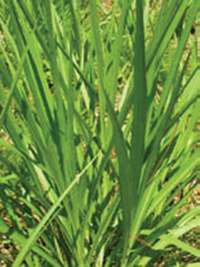
Figure 12. Napier grass (Pennisetum purpureum), useful for forage. Source: Tim Motis
Legumes are especially valuable for feeding animals because of their high nutritional value. They are seldom used alone but in mixtures with grasses. Such mixed pastures are often used in the temperate zone to increase the nutritional value of grass diets for animals. In the tropics, however, it is especially difficult to establish stable mixtures. Indeed, it has often been said that the tropics lack a good clover or equivalent. There are some special exceptions to this rule, and perhaps the best of these are leguminous, nitrogen fixing trees, often of but not confined to desert regions. Some of these trees are weedy and their introduction can have widespread ecological effects.
|
Table 25. A Comparison of Tropical Feed Legumes. |
|||||||
|
Common Name |
Species Name |
Annual/ Perennial |
Propagation |
Growth Habit |
Adaptation |
||
|
Temp. |
Flood |
Dry |
|||||
|
Apple ring acacia |
Faidherbia albida |
perennial |
seed |
tree |
hot |
no |
some |
|
Centro |
Centrosema pubescens |
perennial |
seed |
vine |
hot |
no |
some |
|
Jack bean |
Canavalia ensiformis |
annual |
seed |
bush |
hot |
no |
some |
|
Leucaena |
Leucaena spp. |
perennial |
seed |
tree |
hot |
no |
yes |
|
Mesquite |
Prosopis spp. |
perennial |
seed |
tree |
hot |
no |
yes |
|
Mother-of-cacao |
Gliricidia sepium |
perennial |
seed, cuttings |
tree |
hot |
some |
some |
|
Prickly sesban |
Sesbania bispinosa |
perennial |
seed |
shrub |
hot |
no |
some |
|
Spanish tick-clover |
Desmodium uncinatum |
perennial |
seed |
vine |
hot |
no |
some |
|
Tropical kudzu |
Pueraria phaseoloides |
perennial |
seed |
vine |
hot |
some |
some |
|
Umbrella thorn |
Acacia tortilis |
perennial |
seed |
tree |
hot |
no |
yes |
|
Table 26. Uses and Ratings (0-5) of Uses for Selected Legumes. |
|||||||
|
Common Name |
Food |
Feed |
Fiber |
Construction |
Fuel |
Soil Amend. |
Erosion Control |
|
Apple ring acacia |
0 |
5 |
0 |
3 |
3 |
4 |
3 |
|
Centro |
0 |
4 |
0 |
0 |
0 |
4 |
4 |
|
Jack bean |
1 |
3 |
0 |
0 |
0 |
2 |
2 |
|
Leucaena |
4 |
4 |
0 |
2 |
4 |
4 |
3 |
|
Tropical kudzu |
0 |
4 |
0 |
0 |
0 |
3 |
4 |
|
Mesquite |
2 |
5 |
0 |
3 |
4 |
3 |
4 |
|
Mother-of-cacao |
2 |
3 |
0 |
3 |
3 |
3 |
3 |
|
Prickly sesban |
2 |
3 |
0 |
3 |
3 |
3 |
3 |
|
Spanish tick- clover |
0 |
4 |
0 |
0 |
0 |
4 |
4 |
|
St. John’s bread |
4 |
5 |
0 |
2 |
4 |
2 |
2 |
|
Umbrella thorn |
0 |
4 |
0 |
4 |
4 |
4 |
4 |
Other Feed Plants:
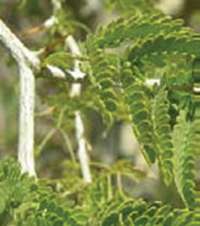
Figure 13. Apple Ring Acacia (Faidherbia albida), often intercropped with grain crops. Source: Tim Motis
The number of other feed plant species in the tropics is very high but few if any of these can compare to grasses or legumes in forage value.
Plants for Supplemental Human Needs
Fibers:
Few tropical small farms will produce their own fiber, but many will produce fiber as a crop to sell. There are many good fiber crops available. Some weeds are used as fibers.
|
Table 27. A Comparison of Fiber Crops. |
||||||||
|
Common Name |
Species Name |
Annual or Perennial |
Growth Habit |
|
Adaptation |
|
Other Uses |
|
|
Temp. |
Day- Length |
Flood |
Drought |
|||||
|
Cotton |
Gossypium spp. |
annual |
large herb |
hot |
neutral |
no |
no |
stuffing |
|
Hemp |
Cannabis sativa |
annual |
large herb |
warm-hot |
neutral |
yes |
no |
yes |
|
Jute |
Corchorus capsularis |
annual |
herb |
hot |
neutral |
no |
no |
cord |
|
Kapok |
Ceiba pendandra |
perennial |
tree |
hot |
neutral |
no |
no |
stuffing |
|
Kenaf |
Hibiscus spp. |
annual |
herb |
hot |
longday |
no |
no |
cord, leaves |
|
Mahoe |
Hibiscus tiliaceus |
perennial |
tree |
hot |
neutral |
yes |
yes |
no |
|
Abaca |
Musa textilis |
perennial |
large herb |
hot |
neutral |
some |
no |
cord |
|
Ramie |
Boehmeria nivea |
annual |
herb |
hot |
longday |
no |
no |
cord |
|
Sisal |
Agava sisalana |
perennial |
herb |
hot |
neutral |
no |
yes |
cord |
|
Table 28. Uses and Ratings (0-5) of the Uses of Selected Fiber Crops. |
|||||||
|
Common Name |
Food |
Feed |
Fiber |
Construction |
Fuel |
Soil Amend. |
Erosion Control |
|
Cotton |
3 |
3 |
5 |
0 |
2 |
0 |
1 |
|
Hemp |
1 |
0 |
1 |
0 |
0 |
0 |
1 |
|
Jute |
2 |
1 |
3 |
1 |
0 |
0 |
0 |
|
Kapok |
2 |
1 |
2 |
1 |
2 |
0 |
0 |
|
Kenaf |
1 |
1 |
2 |
0 |
0 |
0 |
1 |
|
Mahoe |
2 |
1 |
2 |
1 |
2 |
0 |
0 |
|
Manila hemp |
0 |
0 |
2 |
0 |
0 |
0 |
1 |
|
Ramie |
1 |
1 |
3 |
0 |
1 |
0 |
1 |
|
Sisal |
1 |
0 |
2 |
0 |
0 |
0 |
1 |
Materials for Thatching and Weaving:
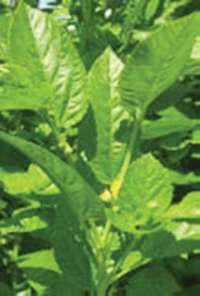
Figure 14. Jute (Corchorus spp.), used to produce fiber for making twine, cloth, and burlap. Source: Tim Motis
The list of materials used for weaving and thatching would be very long. It would also vary from place to place; for any given area, many locally occurring plants are used for this purpose. Grasses are often abundant, and reeds of various kinds are also often available. Palm leaves in the entirety of their leaflets are very common weaving and thatching materials.
Other Materials for Making Clothes:
Cloth has often been made in the tropics by beating other fibers of a selected plant, usually the cortex,
until the fibers become a thin sheet of what could be called vegetable felt. Some of the plants are as follows:
|
Table 29. A Comparison of Other Materials for Making Clothes. |
||||
|
Common Name |
Species Name |
Growth Habit |
Propagation |
Adaptation |
|
Baobab |
Adansonia digitata |
large tree |
seeds |
dry savannahs |
|
Mahoe |
Talipariti tiliaceum |
medium tree |
seeds, cuttings |
wet tropics |
|
Paper mulberry |
Broussonetia papyrifera |
large shrub |
seeds, cuttings |
wide climatic adaptation |
Timber and Useful Woods:
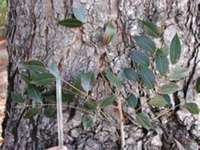
Figure 15. Mahogany (Swietenia spp.) bark and leaves. A valuable timber species now regulated by international trade laws. Source: Tim Motis
The tropics have some excellent timber trees that need years for production and thus are not very feasible for the small farm.
|
Table 30. Uses and Ratings (0-5) of Uses for Tropical Lumber-Producing Species.. |
||||||||
|
Common Name |
Species Name |
Food |
Feed |
Fiber |
Construction |
Fuel |
Soil Amend. |
Erosion Control |
|
African-teak |
Pericopsis elata |
0 |
0 |
0 |
5 |
5 |
4 |
2 |
|
Bamboo |
Bambusa spp, others |
2 |
2 |
0 |
4 |
3 |
0 |
4 |
|
Intsia |
Intsia spp. |
0 |
0 |
0 |
5 |
5 |
4 |
2 |
|
Mahogany |
Swietenia mahagoni |
0 |
0 |
0 |
5 |
4 |
0 |
2 |
|
Monkey pod |
Samanea saman |
1 |
3 |
0 |
4 |
4 |
2 |
1 |
|
Narra |
Pterocarpus indicus |
0 |
0 |
0 |
4 |
4 |
4 |
2 |
|
Rosewood |
Dalbergia spp. |
0 |
0 |
0 |
3 |
4 |
3 |
2 |
|
Teak |
Tectona grandis |
0 |
0 |
0 |
5 |
4 |
0 |
2 |
| Tropical pines | Pinus spp. | 0 | 0 | 0 | 5 | 5 | 1 | 2 |
Fuel Woods:
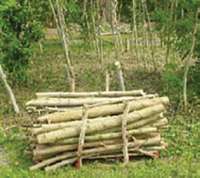
Figure 16. Wood harvested from small woodlot (mostly Leucaena leucocephala) at ECHO. Source: Tim Motis
Many trees, if not all, can be used as sources of fuel. In this table, only the species for the hot, humid tropics are emphasized. In most parts of the tropics, wood is not used as a source of heat for the house itself. Rather, it is used only for cooking and baking. Small caliber, soft wood burns rapidly; however, dense wood burns hotter and longer for cooking. There is a great need to include fuel wood as a component of almost every small farm. When possible, farm fuel wood can be produced from the prunings of living fences and alley cropping trees.
|
Table 31. Uses and Use Ratings (0-5) of Common Fuel Woods of the Hot Humid Tropics. |
||||||||
|
Common Name |
Species Name |
Food |
Feed |
Construction |
Fuel |
Soil Amend. |
Erosion Control |
Other |
|
Agati |
Sesbania grandiflora |
2 |
4 |
1 |
4 |
4 |
4 |
pulp |
|
Batai |
Falcataria moluccana |
0 |
0 |
3 |
4 |
5 |
5 |
pulp |
|
Bracatinga |
Mimosa scabrella |
1 |
1 |
1 |
4 |
4 |
4 |
pulp |
|
Calliandra |
Calliandra calothyrsus |
0 |
5 |
2 |
5 |
5 |
5 |
honey |
|
Capulin |
Muntingia calabura |
1 |
0 |
0 |
3 |
3 |
1 |
|
|
Casuarina |
Casuarina equisitefolia |
0 |
0 |
4 |
5 |
1 |
4 |
pulp |
|
Derris |
Derris indica |
0 |
3 |
3 |
5 |
5 |
1 |
insect |
|
Earleaf acacia |
Acacia auriculiformis |
0 |
0 |
1 |
4 |
4 |
1 |
pulp |
|
Gmelina |
Gmelina arborea |
0 |
0 |
3 |
4 |
1 |
2 |
honey |
|
Guacima |
Guazuma ulmifolia |
3 |
3 |
3 |
4 |
1 |
2 |
|
|
Guava |
Psidium guajava |
5 |
4 |
3 |
5 |
1 |
1 |
|
|
Gumbo limbo |
Bursera simaruba |
0 |
0 |
2 |
4 |
1 |
1 |
fence |
|
Honduras pine |
Pinus caribaea |
0 |
0 |
5 |
4 |
1 |
3 |
|
|
Leucaena |
Leucaena leucocephala |
3 |
5 |
2 |
3 |
5 |
4 |
|
|
Mahoe |
Talipariti tiliaceum |
2 |
0 |
3 |
3 |
1 |
3 |
|
|
Mindanao gum |
Eucalyptus deglupta |
0 |
0 |
4 |
4 |
1 |
1 |
beauty |
|
Mother cacao |
Gliricidia sepium |
2 |
4 |
3 |
4 |
5 |
4 |
fence |
|
Musizi |
Maesopsis eminii |
1 |
2 |
3 |
4 |
1 |
1 |
|
|
Prickly sesban |
Sesbania bispinosa |
0 |
2 |
4 |
1 |
4 |
4 |
gum |
|
Red gum |
Eucalyptus camauldulensis |
0 |
0 |
4 |
4 |
1 |
1 |
|
|
Red mahogany |
Eucalyptus pellita |
0 |
0 |
5 |
4 |
1 |
1 |
|
|
Seagrape |
Cocoloba uvifera |
2 |
0 |
3 |
5 |
1 |
3 |
beauty |
|
Timor white gum |
Eucalyptus urophylla |
0 |
0 |
3 |
4 |
1 |
1 |
|
PLANTS FOR THE FARM ITSELF: CROPS TO CONSERVE OR IMPROVE THE SOIL
Nitrogen Fixing Trees:
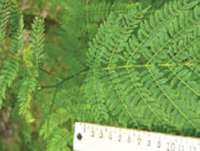
Figure 17. Leucaena (Leucaena leucocephala), a fast-growing and multi-purpose leguminous tree. Source: Tim Motis
Any plant that can add nitrogen to the soil in a chemically fixed, plant available form is especially valuable on the small farm. While plants of many families can do this, the ability is especially well developed among the legumes. The tropics are rich in nitrogen-fixing trees, and many of these are useful for multiple purposes such as animal feed, construction and fuel woods, alley cropping, and even minor food uses. Warning! Many of these trees are “weedy” (i.e. can become nuisance) and can cause serious ecological problems, not only by replacing other vegetation but by mining ground water and thus lowering water tables. Therefore, widespread introduction is not recommended unless precautions are taken to avoid the development of new problems. Practices such as pruning hedgerows (e.g. Leucaena spp.) can limit seeding. Some of the best of these trees are mentioned below.
|
Table 32. Comparison of Nitrogen-Fixing Trees. |
|||
|
Common Names |
Species Name |
Some Uses |
Adaptation |
|
Apple-ring acacia |
Acacia albida |
multipurpose, animal feed |
hot, dry tropics |
|
Calliandra |
Calliandra calothyrsis |
multipurpose, fuelwood |
wet tropics |
|
Casuarina |
Casuarina spp. |
lumber, windbreak |
intermediate tropics |
|
Coral beans |
Erythrina spp. |
multipurpose, crop shade |
wet tropics |
|
Egyptian acacia |
Acacia nilotica |
multipurpose, alley cropping |
hot, dry tropics |
|
Leucaena |
Leucaena leucocephala |
multipurpose, alley cropping |
intermediate tropics |
|
Mother-of-cacao |
Gliricidia sepium |
multipurpose, live fence |
intermediate tropics |
|
Sesban |
Sesbania grandflora |
multipurpose, feed, food |
intermediate tropics |
|
Siamese acacia |
Senna siamea |
multipurpose, fuel, hardwood |
intermediate tropics |
|
Tagasaste |
Chamaecytisus prolifer var. palmensis |
multipurpose, alley cropping |
tropical upland |
Miners of Deeply Placed Minerals:
It is generally supposed, usually without rigorous proof, that deeply rooting trees, and this often includes very large trees and trees adapted to the hot, dry tropics, can obtain minerals available at deep levels of the soil that cannot be reached by shallow-rooted plants. As leaves fall from the deeply rooted trees, these minerals are then released to the soil and can be used by the shallower rooting plants. It is not possible at this time to produce a good list of such plants, but they are believed to be common.
Manure Crops:
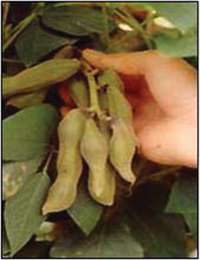
Figure 18. Pods (not edible) of Velvet Bean (Mucuna pruriens), a green manure commonly intercropped with corn.
Manure crops are those that are planted specifically to produce a large amount of green or dry material that may be mixed into the soil to improve its fertility and texture. Such crops are often equally useful in suppressing weeds, or they may be used as temporary ground covers. They are planted from seeds. All of the plants mentioned in this chart can be used as feed for animals. However, feeding them to livestock limits their effectiveness as green manures and cover crops. The distinction between green manures and cover crops is minimal, and often the two words are used interchangeably. The following definitions show the difference in emphasis of the two terms. Green manure crops are those grown for the purpose of incorporation into the soil when the plant is fresh and green (thus high in nitrogen), resulting in soil enrichment and a greater water holding capacity. Ground cover crops grow vigorously to outcompete weeds and provide a good soil covering and mulch. These crops are also good for soil improvement and erosion prevention.
|
Table 33. A Comparison of Manure Crops for the Small Farm. |
|||
|
Common Name |
Species Name |
Growth Habit |
Adaptation |
|
Calopo |
Calopogonium mucunoides |
trailing vine |
hot, humid tropics |
|
Cowpea |
Vigna unguiculata |
bush or vine |
intermediate tropics |
|
Indigo |
Indigofera spp. |
herbs |
hot, wet tropics |
|
Jackbean |
Canavalia ensiformis |
bushy herb |
hot, wet tropics |
|
Sunnhemp |
Crotalaria juncea |
tall herb |
intermediate tropics |
|
Velvet bean |
Mucuna spp. |
trailing vine |
tropics |
Borders Against Erosion:
These important crops, chiefly grasses, are capable of growing under adverse conditions. By virtue of their deep roots and extensive vegetative growth, they serve as barriers to erosion, filtering soil being carried away from the running water, and often resulting in the filling in of deep erosion channels with collected soil.
|
Table 34. Uses and Ratings (0-5) of Uses of Some Borders Against Erosion. |
||||||||
|
Common Name |
Species Name |
Alley Crop |
Nitrogen Fixing |
Ground Cover |
Erosion Control |
Mulch |
Wind Break |
Shade |
|
Lemon grass |
Cymbopogon citratus |
2 |
0 |
1 |
4 |
2 |
0 |
0 |
|
Napier grass |
Pennesitum purpureum |
1 |
0 |
0 |
5 |
2 |
0 |
0 |
|
Vetiver |
Chrysopogon zizaniodes |
1 |
0 |
3 |
3 |
3 |
0 |
0 |
Mulch:
Mulch is especially useful around crop plants to protect against loss of moisture, to reduce the temperature at the ground level, and to slowly release nutrients to the soil. No comprehensive list of such plants can be developed, for mulch is usually obtained from whatever plants are available, including the residues of crops. Casuarina is a very good source of mulch.
Cover Crops:
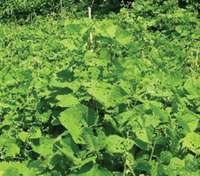
Figure 19. Lablab Bean (Lablab purpureus) vines covering the ground. Source: Tim Motis
Ground covers must be distinguished from green manure crops on the basis of purpose. Some of the same species are used for both purposes. Ground covers protect the soil from erosion and intense sunlight. They also shade out weeds and can improve the aesthetic value of the land. They may be established from seed or cuttings as short- or long-term plantings. Some species of weeds (e.g. shade-loving) may flourish under long-term ground covers. Nevertheless, ground covers can be extremely useful, work-reducing plants.
|
Table 35. Adaptation and Ratings (0-5) of Uses of Some of the Principal Species Used for Cover Crops. |
|||||||
|
Common Name |
Species Name |
Adaptation |
Propagation |
Nitrogen Fixation |
Ground Cover |
Erosion Control |
Mulch |
|
Desmodium |
Desmodium spp. |
W |
seeds |
4 |
3-5 |
3-5 |
3 |
|
Indigo |
Indigofera spp. |
I,W |
seeds |
4 |
5 |
5 |
3 |
|
Jack bean |
Canavalia ensiformis |
I,W |
seeds |
4 |
4 |
3 |
3 |
|
Kudzu |
Pueraria phaseoloides |
W |
seeds |
4 |
5 |
5 |
2 |
|
Lablab bean |
Lablab purpureus |
I,W |
seeds |
4 |
1-5 |
1-5 |
2 |
|
Perennial peanut |
Arachis spp. |
I |
seeds, cuttings |
4 |
4-5 |
5 |
2 |
|
Perennial soybean |
Neonotonia wightii |
I,W |
seeds |
4 |
5 |
5 |
3 |
|
Sarawak-bean |
Vigna hosei |
I,W |
cuttings |
4 |
5 |
4 |
5 |
|
Velvet bean |
Mucuna pruriens |
I,W |
seeds |
4 |
5 |
5 |
3 |
Plants for the Farm Itself: Crops to Modify the Climate
Windbreaks:
A good windbreak should be tall but not spreading. It should be comprised of trees with roots that penetrate the soil vertically and that do not extend far horizontally. Furthermore, such trees should not spread as weeds or become difficult to control and manage. There are few such trees.
|
Table 36. Comparison of Windbreak Plants. |
||||
|
Common Name |
Species Name |
Tree Form |
Other Uses |
Disadvantages |
|
Casuarina |
Casuarina spp. |
tall, narrow |
excellent wood mulch |
some species spread by root shoots |
|
Indian coral tree |
Erythrina variegata |
tall, very narrow |
mulch, feed, alley cropping |
|
|
Swamp mahogany |
Eucalyptus robusta |
large, spreading |
lumber, wood pulp |
bulky nature |
|
Tamarisk |
Tamarix spp. |
large, spreading |
mulch, erosion control |
bulky nature |
Plants for Shade:
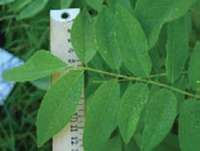
Figure 20. Madre de Cacao (Gliricidia sepium), traditionally grown to shade cocoas. Source: Tim Motis
Shade is often needed on the small farm, not only for comfort around the home, but also for the same purpose over animal cages. In addition, a few crop plants, especially coffee, cacao, and vanilla are grown under shade. Shade can be obtained from trees themselves or from vines grown on trellises. A few tropical trees lose their leaves during the dry season. Others can be pruned during winter to permit more light to enter and to utilize the excess growth as fuel, wood, or mulch. The list of plants used for shade would be excessively large. Yet, with repect to trees that provide shade to other crops, a few names of prominent genera can be mentioned: Inga, Erythrina, Gliricidia, and Sesbania.
Plants for the Farm Itself: Other Special Purpose Plants
Living Fences:
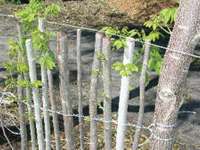
Figure 21. Cuttings of Gliricidia sepium planted to form a living fence. Source: Tim Motis
Living fences can be of great value in the tropics where termites abound and rapidly devour fence posts or iron posts rust rapidly. The ideal fence post is one that can be planted as a large cutting that can be strung with wire or animal fencing immediately, and quickly roots, and which can then be used for other purposes as well. However, a few fences are constructed as plants side-by-side without the use of wire. Hundreds of creative variations can be used.
|
Table 37. Adaptation and Ratings (0-5) for Multiple Uses of Some of the Better Living Fences of the Tropics. |
||||||||
|
Common Name |
Species Name |
Adaptation |
Alley Crop |
Nitrogen Fixation |
Erosion Control |
Mulch |
Windbreak |
Shade |
|
Babul acacia |
Acacia nylotica |
D |
3 |
4 |
3 |
1 |
1 |
1 |
|
Basul |
Erythrina edulis |
I,W |
1 |
4 |
2 |
2 |
2 |
2 |
|
Gumbolimbo |
Bursera simaruba |
D,I |
1 |
0 |
1 |
1 |
1 |
1 |
|
Hedge cactus |
Cereus hildmannianus |
D |
0 |
0 |
0 |
0 |
2 |
0 |
|
Horseradish tree |
Moringa oleifera |
I |
4 |
0 |
1 |
2 |
0 |
1 |
|
Izote |
Yucca guatemalensis |
I,W |
1 |
0 |
2 |
0 |
0 |
0 |
|
Mahoe |
Talipariti tiliaceum |
W |
1 |
0 |
3 |
2 |
3 |
3 |
|
Mother cacao |
Gliricidia sepium |
I |
3 |
4 |
3 |
3 |
0 |
2 |
|
Palmillo |
Dracaena fragrans |
W |
1 |
0 |
1 |
0 |
1 |
0 |
|
Pencil tree |
Euphorbia tirucalli |
D |
0 |
0 |
2 |
1 |
0 |
0 |
|
Pito |
Erythrina berteroana |
W |
4 |
5 |
3 |
2 |
1 |
1 |
|
Tree tobacco |
Acnistus arborescens |
I |
1 |
0 |
1 |
1 |
1 |
0 |
|
Tuna (prickly pear) |
Opuntia spp. |
D |
0 |
0 |
2 |
0 |
0 |
0 |
Plants for Alley Cropping:
As a system for crop production in the tropics, especially on hillsides, alley cropping appears promising. Some excellent plants are available, and there can be no doubt of the importance of this area of development. Unless a particular species for making the alley has been selected already in a particular region, local trial and error is always desirable. Some of the species used for alley cropping have proved to be weedy. Care must be exercised to avoid such longterm ecological damage. Frequently, hedge-row species are chosen that produce some valuable product. Alley cropping is less effective in semi-arid regions due to competition with crop plants for moisture.
|
Table 38. Adaptation and Ratings (0-5) of Uses of Some of the Principal Species Used for Alley Cropping. |
||||||||
|
Common Name |
Species Name |
Adaptation* |
Alley Crop |
Nitrogen Fixing |
Erosion Control |
Mulch |
Wind- Break |
Shade |
|
Agati |
Sesbania grandiflora |
I |
5 |
3 |
4 |
2 |
1 |
1 |
|
Egyptian acacia |
Acacia nilotica |
D |
5 |
5 |
2 |
2 |
4 |
4 |
|
Flemingia |
Flemingia macrophylla |
W |
5 |
5 |
2 |
1 |
2 |
0 |
|
Horseradish tree |
Moringa oleifera |
I |
4 |
0 |
1 |
2 |
0 |
1 |
|
Indian coral tree |
Erythrina variegata |
I,W |
4 |
4 |
1 |
2 |
2 |
2 |
|
Leucaena |
Leucaena leucocephala |
I |
5 |
5 |
2 |
3 |
1 |
1 |
|
Madre de cacao |
Gliricidia sepium |
I |
4 |
4 |
2 |
3 |
1 |
3 |
|
Pito |
Erythrina berteroana |
I,W |
4 |
5 |
3 |
2 |
1 |
1 |
|
Prairie acacia |
Acacia angustissima |
I,W |
4 |
5 |
2 |
4 |
1 |
0 |
|
Pigeon pea |
Cajanus cajan |
I |
5 |
4 |
3 |
3 |
0 |
0 |
|
Tagasaste |
Chamaecytisus prolifer |
U |
5 |
4 |
2 |
3 |
0 |
0 |
Cite this article as:
Martin, F.W., and ECHO Staff 2007. Selecting the Best Plants for the Tropical Subsistence Farm. ECHO Technical Note no. 20.